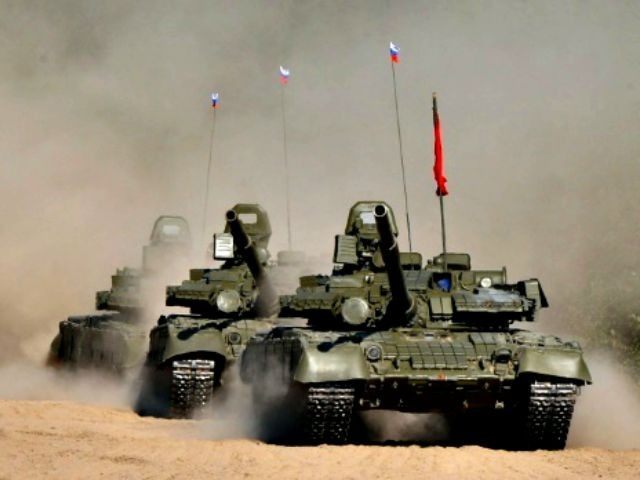The Russian government began their largest war games this year, with over 95,000 troops this week between the Ural Mountains and Siberia. The troops include soldiers, navy, and the air force.
The defense ministry stated these games are “the most large-scale drill of 2015.” Military drills are conducted “at 20 sites across Russia’s central military district,” including the “Siberian Altai and southern Astrakhan regions.” From Deutsche Welle:
Military officials said the drills were aimed at testing the readiness of the military to “manage coalition groups of troops in containing an international armed conflict.”
Troops will simulate “blocking and destroying illegal armed formations during joint special operations,” the ministry said.
Twenty naval ships and up to 170 aircraft are taking part in the exercises, which run until Sunday, and will be observed, on at least one of the days, by Russian President Vladimir Putin.
Soldiers from Kazakhstan are also participating in the drills, since they belong to the Collective Security Treaty Organization (CSTO), which includes ex-Soviet Union states.
Russia has flaunted their military power since they invaded Ukraine and annexed Crimea in March 2014. Tensions between Moscow and the West are at Cold War levels. A report from August claimed that war between Russia and NATO almost broke out 66 times in the past year.
“The situation is ripe with potential for either dangerous miscalculation or an accident that could trigger a worsening of the crisis or even a direct military confrontation,” stated the European Leadership Network.
In June, Putin insisted his country faces intense threats on its border and must upgrade its army for protection. He promised new military graduates plans“to spend 22 trillion rubles (over $400 billion) through 2020 to give the armed forces dozens of navy ships, hundreds of new planes and missiles, and thousands of tanks and other weapons.” But his nuclear-armed intercontinental missile program has been delayed, which means the first missile will not be available for several months. There are no specific details regarding why it is taking so long.
“The plant is doing its work,” one defense industry source told The Moscow Times. “Everything now depends on whether or not contractors deliver the [remaining] components on time. The red line that cannot be crossed is the end of October.”
In May, NATO countries participated in Arctic exercises, which were planned before Russia attacked Ukraine. However, Putin responded with an order for a mass surprise drill.
“The aim is to exercise and train units in the orchestration and conduct of complex air operations, in close relations to NATO partners,” explained Norwegian brigadier general Jan Ove Rygg.
Putin then ordered 12,000 soldiers and 250 aircraft to perform military exercises in the Ural mountains and Siberia. The Russian military ministry insists their drills are part of a “massive surprise inspection.” The inspection includes over “700 weapons and pieces of military hardware.”
NATO intercepted hundreds of Russian jets over NATO airspace in 2014. NATO said these Russian planes do not use on-board transponders utilized for surveillance. The organization said the plans “pose a potential risk to civil aviation as civilian air traffic control cannot detect these aircraft or ensure there is no interference with civilian air traffic.” Portugal, a member of the European Union and a founding member of NATO, chased a Russian ship out of their waters on November 6. Russia claims the ship conducted “marine research,” but Portugal intervened when the ship floated almost fourteen miles from the coast.
NATO will likely break that record in 2015. In June, Russian jets encroached Estonian airspace, which forced the “RAF Typhoon fighters, based in Estonia to identify and escort them away.” NATO troops were “practicing sea landings, air lifts and assaults” in the area. The Russian government claimed these drills were “reviving the ghost of the Cold War.” On August 25, reports stated the U.S. is planning “to send Lockheed Martin Corp.’s F-22 fighter jets to Europe.”

COMMENTS
Please let us know if you're having issues with commenting.